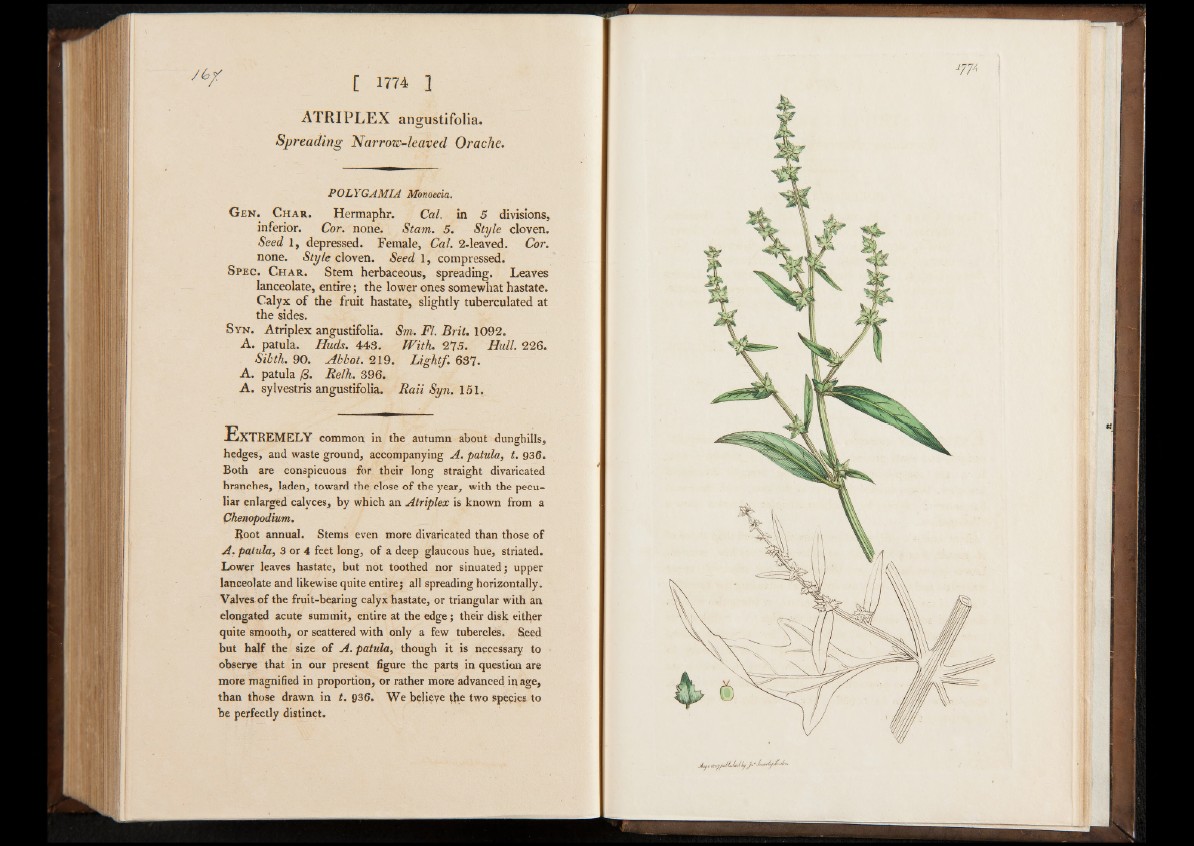
ATRIPLEX angustifolia.
Spreading Narrow-leaved Orache.
POLYGAMIA Monoecia.
G e n . Ch a r . Hermaphr. Cal. in 5 divisions,
inferior. Cor. none. Stam. 5. Style cloven.
Seed 1, depressed. Female, Cal. 2-leaved. Cor.
none. Style cloven. Seed 1, compressed.
S pec. Ch a r . Stem herbaceous, spreading. Leaves
lanceolate, entire; the lower ones somewhat hastate.
Calyx of the fruit hastate, slightly tuberculated at
the sides.
S y n . Atriplex angustifolia. Sm. FI. B ril. 1092.
A . patula. Huds. 443. W ith . 275. Hull. 226.
Sibth. 90. Abbot. 219. L ig h tf. 637.
A . patula 13. Relh. 396.
A . sylvestris angustifolia. R a ii Syn. 151.
E x t r e m e l y common, in the autumn about dunghills,
hedges, and waste ground, accompanying A. patula, t. 936.
Both are conspicuous for their long straight divaricated
branches, laden, toward the close o f the year, with the peculiar
enlarged calyces, by which an Atriplex is known from a
Chenopodium.
Root annual. Stems even more divaricated than those o f
A. patula, 3 or 4 feet long, o f a deep glaucous hue, striated.
Lower leaves hastate, but not toothed nor sinuated; upper
lanceolate and likewise quite entire; all spreading horizontally.
V a lv e s o f the fruit-bearing calyx hastate, or triangular with an
elongated acute summit, entire at the ed g e ; their disk either
quite smooth, or scattered with only a few tubercles. Seed
but h a lf the size o f A. patula, though it is necessary to
observe that in our present figure the parts in question are
more magnified in proportion, or rather more advanced in age,
than those drawn in t. 936. W e believe the two species to
be perfectly distinct.